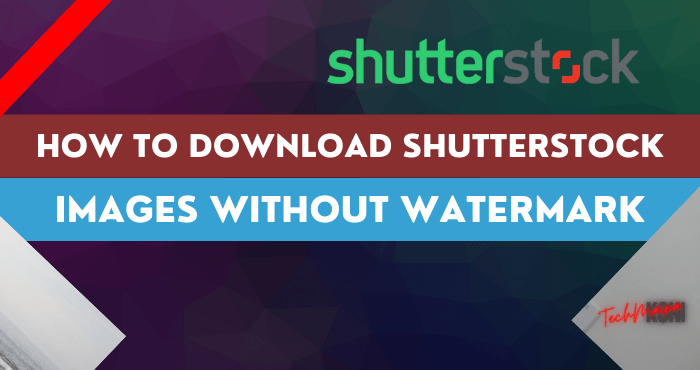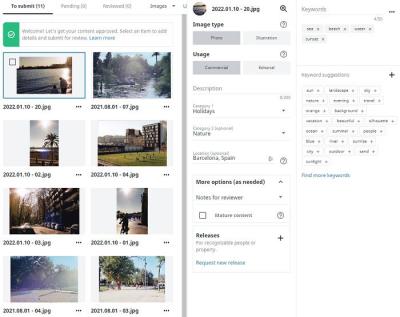Shutterstock is one of the biggest names in the world of stock photography, offering millions of images, videos, and music tracks for creative projects. Whether you’re a blogger, small business owner, or designer, Shutterstock provides a vast library to help bring your ideas to life. But navigating their licensing can sometimes feel a bit confusing—especially if you’re trying to access images without paying. In this post, we’ll explore how you can legally obtain free images from
Understanding Free Image Options on Shutterstock
While Shutterstock is primarily a paid platform, they do offer some options for obtaining free images legally. Here’s what you need to know:
- Free Trial Downloads: Shutterstock often provides a free trial, which allows you to download a limited number of images at no cost. This is perfect if you need images for a short-term project or want to test their library before subscribing.
- Free Image Collections: Occasionally, Shutterstock releases collections of free images that are available for download without a subscription. These are usually promoted on their website or through email campaigns.
- Contributor Free Images: If you’re a photographer or artist contributing to Shutterstock, they sometimes feature your images as free downloads to promote your work. However, this isn’t a method for non-contributors to access free images.
- Special Promotions and Events: Shutterstock may run special promotions or events where selected images are temporarily available for free. Keep an eye on their website or subscribe to their newsletter for updates.
It’s crucial to remember that while these options provide free access, they come with specific terms. Always read the licensing agreements associated with any free download to ensure you’re using the images correctly and legally. Avoid using any images that are marked as premium or paid unless you’ve properly purchased or licensed them—using images without proper rights can lead to legal issues.
In summary, Shutterstock does offer ways to access images for free, but these are typically limited in scope and time. The key is to stay informed about their current offers and to understand the licensing terms attached to any free images you plan to use. That way, you can enjoy high-quality visuals without risking copyright infringement.
Legal Ways to Access Free Images from Shutterstock
Getting high-quality images without worrying about copyright issues is a common goal for many content creators, marketers, and hobbyists. Luckily, Shutterstock offers several legitimate ways to access free images, so you can find what you need without stepping into legal gray areas.
One straightforward method is to explore Shutterstock’s free collection. They regularly feature a selection of images that are available at no cost, usually for a limited time. These images are cleared for personal and commercial use, so you don’t need to worry about licensing hassles. Simply visit the Shutterstock website and look for the Free Images section—it’s often prominently displayed on the homepage or under the menu options.
Another way is to utilize Shutterstock’s Contributor Program. If you register as a contributor, you might have access to certain free images or promotional offers, especially if you participate in campaigns or contests. Plus, contributing content yourself can sometimes earn you free downloads or credits, which you can then use to access other images.
Additionally, some educational institutions, non-profits, or creative communities partner with Shutterstock to provide free or discounted access to images. If you are a student or part of an organization, check if your institution has any agreements or subscriptions that include free image resources.
Lastly, keep an eye on official social media channels and newsletters from Shutterstock. They often announce special promotions, free download days, or exclusive offers for subscribers and followers. These can be golden opportunities to snag free images legally and safely.
Remember, always verify the licensing terms attached to any free image you download. Even if an image is marked as free, it’s crucial to ensure it’s intended for your type of project—be it commercial or personal—and that you follow any attribution requirements if applicable.
Utilizing Shutterstock’s Free Trial and Promotions
If you’re looking to access a larger selection of images without upfront costs, Shutterstock’s free trial is an excellent option. Typically, new users can sign up and receive a limited number of free downloads—often around 10 images—just by creating an account. This is a great way to test out the platform and see if it fits your needs before committing financially.
Here’s how to make the most of Shutterstock’s free trial:
- Sign up early: Make sure to do it as soon as possible since free trial offers are usually time-limited.
- Download judiciously: Use your free downloads on high-priority projects to maximize their value.
- Understand the terms: Read the trial agreement carefully—some trials require you to cancel before they convert into a paid subscription.
Besides free trials, Shutterstock often runs promotional campaigns during holidays, special events, or industry-specific conferences. These promotions might include:
- Discounted subscription plans
- Bonus credits for downloads
- Extended free trial periods
To catch these promotions, consider subscribing to their newsletter or following their social media accounts. Quick action can help you snag free images or discounted rates, making your project more cost-effective.
Always be cautious to read the fine print with any promotion, ensuring that you understand what’s free, what requires payment afterward, and how to cancel if you don’t want to continue with a paid plan. This way, you can enjoy the benefits without any surprises or hidden charges.
In summary, leveraging Shutterstock’s free trial and promotional offers can be a smart way to access high-quality images legally and at no cost. Just plan ahead, stay informed about current deals, and use your downloads wisely to get the best value out of these opportunities.
Alternative Resources for Free Stock Images
While Shutterstock is a fantastic resource for high-quality images, it’s not the only place to find free stock photos. There are plenty of websites out there that offer stunning visuals without costing a dime, which can be perfect for bloggers, small businesses, or anyone on a budget. Let’s explore some of the most popular and reliable options:
- Unsplash: Known for its vast library of free, high-resolution images contributed by photographers worldwide. The licensing is very flexible, allowing you to use photos for commercial and personal projects without attribution (though attribution is appreciated).
- Pexels: Offers a wide range of free stock photos and videos. All images are licensed under the Creative Commons Zero (CC0) license, meaning they are free to use without attribution.
- Pixabay: Provides over 1.7 million free images, videos, and music. The content is released under Pixabay License, allowing for free commercial use without attribution.
- Flickr’s Creative Commons: A large collection of images shared under various Creative Commons licenses. Be sure to check each photo’s license to ensure it’s suitable for your intended use.
- StockSnap.io: Features a huge selection of beautiful, high-resolution images. All photos are released under CC0, making them safe for any project.
Using these resources can greatly expand your options for free images while ensuring you stay within legal boundaries. Remember, even when images are free, it’s always good practice to double-check the licensing terms to make sure you’re complying with any attribution requirements or restrictions.
Tips for Using Free Images Legally and Ethically
Getting free images is great, but it’s equally important to use them responsibly. Using images legally and ethically not only protects you from potential copyright issues but also respects the effort and rights of photographers and creators. Here are some helpful tips to keep in mind:
- Always Read the License: Even if an image is labeled as free, licenses can vary. Some images require attribution, while others are completely royalty-free. Make sure you understand the license terms before using an image.
- Give Credit When Required: If the license asks for attribution, provide proper credit to the creator. A simple attribution like “Photo by [Photographer’s Name] from [Website]” is usually enough.
- Avoid Copyrighted or Watermarked Images: Never use images that are clearly copyrighted or contain watermarks unless you have explicit permission or a proper license. Using such images can lead to legal trouble.
- Don’t Overuse or Misrepresent Images: Be honest about the images you use. Don’t manipulate or misrepresent the content in a way that could be misleading or defamatory.
- Be Mindful of Model and Property Releases: Some images feature identifiable people or private property. Ensure the image license covers commercial use if needed, and be aware of any model or property releases associated with the photo.
- Maintain a Record of Your Licenses: Keep track of where you sourced each image and its license terms. This documentation can be helpful if questions arise later.
- Respect Ethical Use: Use images that promote positive, respectful messages. Avoid using images that could be considered offensive, discriminatory, or inappropriate.
By following these tips, you can confidently incorporate free images into your projects without risking legal issues. Remember, respecting creators’ rights and adhering to licensing terms is not just about legality—it’s also about doing the right thing and supporting the creative community.
Conclusion and Best Practices for Using Shutterstock Images
Using Shutterstock images can significantly enhance your projects, but it’s essential to do so responsibly and legally. Always ensure you have the appropriate license for your intended use, whether it’s for personal, commercial, or editorial purposes. Remember that Shutterstock offers various licensing options, so selecting the right one is crucial to avoid copyright issues.
To maximize the benefits while staying compliant, consider the following best practices:
- Read and understand the licensing agreement: Each image comes with specific terms; make sure your usage aligns with these terms.
- Keep records of your licenses: Maintain documentation of your licenses and purchase history for future reference.
- Avoid modifying images excessively: Some licenses restrict derivative works; check if edits are permitted.
- Respect model and property releases: If images feature recognizable people or private property, ensure releases are in place.
- Use images ethically and responsibly: Avoid using images in a misleading or defamatory manner.
Here’s a quick overview of Shutterstock licensing types:
| License Type | Description | Usage Rights |
|---|---|---|
| Standard License | Suitable for most projects with limited distribution. | Web, social media, presentations, and print up to 1 million copies. |
| Enhanced License | For extensive distribution or high-value projects. | Includes unlimited print runs, merchandise, and sublicensing. |
By following these best practices, you can confidently incorporate Shutterstock images into your work while respecting copyright laws and protecting yourself from potential legal issues. Responsible usage not only benefits creators but also ensures your projects maintain integrity and professionalism.



